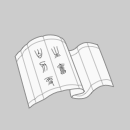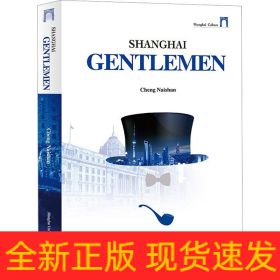
中医基础理论
全新正版 极速发货
¥ 89.85 7.0折 ¥ 128 全新
库存4件
广东广州
认证卖家担保交易快速发货售后保障
作者唐庆,范恒 编
出版社科学出版社
ISBN9787030760692
出版时间2023-07
装帧平装
开本16开
定价128元
货号1203008787
上书时间2024-11-21
- 最新上架
商品详情
- 品相描述:全新
- 商品描述
-
目录
第一章 中医学理论体系概述
A brief introduction to theory system of TCM 1
第一节 中医学理论体系的形成和发展
Formation and development of theory system of TCM 1
一、中医学理论体系的形成Formation of theory system of TCM 1
二、中医学理论体系的发展Development of theory system of TCM 3
第二节 中医学理论体系的主要特点
Main characteristics of theory system of TCM 5
一、中医学理论体系的基本内容Basic content of theory system of TCM 5
二、中医学理论体系的基本结构Basic structure of theory system of TCM 9
三、中医学理论体系的基本特点Basic feature of theory system of TCM 10
第三节 中医学思维方法的特点
Characteristic of thinking method in TCM 19
一、注重宏观观察Emphasize macroscopic observation 20
二、注重整体研究Emphasize holistic research 21
三、擅长哲学思维Good at philosophical thinking 22
四、强调功能联系Emphasize functional connection 24
第四节 中医基础理论课程的主要内容
Main contents of fundamental theory course of TCM 25
本章要点表解 26
第二章 中医学的哲学基础
Philosophic basis of TCM 28
第一节 气一元论
Theory of qi 29
一、气的基本概念Basic concept of qi 29
二、气一元论的基本内容Basic content of theory of qi 30
三、气一元论在中医学中的应用Application of theory of qi in TCM33
第二节 阴阳学说
Yin-yang theory 35
一、阴阳的基本概念Basic concept of yin-yang theory 36
二、阴阳学说的基本内容Basic content of yin-yang theory 38
三、阴阳学说在中医学中的应用Application of yin-yang theory in TCM 41
第三节 五行学说
Five-element theory 46
一、五行的基本概念Basic concept of five elements 47
二、五行学说的基本内容Basic content of five-element theory 48
三、五行学说在中医学中的应用Application of five-element theory in TCM 52
第四节 气一元论、阴阳学说、五行学说的关系
Relationships among theory of qi,yin-yang theory and five-element theory 58
一、气、阴阳、五行的关系
Relationships among qi,yin-yang and five elements 58
二、气一元论、阴阳学说、五行学说相互之间的关系
Mutual relationships among theory of qi,yin-yang theory and five-element theory 59
本章要点表解 62
第三章 藏象
Visceral manifestation 64
第一节 五脏
Five zang viscera 64
一、心Heart 64
二、肺Lung 68
三、脾Spleen 72
四、肝Liver77
五、肾(附:命门)Kidney(Attached:life gate) 82
第二节 六腑
Six fu viscera 88
一、胆Gallbladder 89
二、胃Stomach89
三、小肠Small intestine 91
四、大肠Large intestine 92
五、膀胱Bladder92
六、三焦Triple energizer 93
第三节 奇恒之腑
Extraordinary fu viscera 94
一、脑Brain 95
二、女子胞(附:精室)Uterus with its appendages(Attached: essence chamber) 96
三、髓Marrow 97
第四节 形体官窍
Physique, sense organs and orifices 98
一、形体Physique 98
二、官窍Sense organs and orifices 103
三、五脏外华Manifestations of five zang viscera 112
第五节 脏腑之间的关系
Relationship of zang-fu viscera 113
一、脏与脏之间的关系Relationship between zang viscera 113
二、腑与腑之间的关系Relationship between fu viscera 118
三、脏与腑之间的关系Relationship between zang and fu viscera 118
四、五脏与奇恒之腑之间的关系
Relationship between zang and extraordinary fu viscera 120
第六节 人体的生命活动与五脏调节
Life activities of human body and regulation of five zang viscera 122
一、神志活动Mental activity 122
二、血液循环Circulation of blood 125
三、呼吸运动Respiratory motion 126
四、消化吸收Digestion,absorption 127
五、水液代谢Water-liquid metabolism 127
六、生长生殖Growth,reproduction 128
本章要点表解 130
第四章 精、气、血、津液
Essence,qi,blood,fluid and liquid 136
第一节 精
Essence 136
一、人体之精的基本概念Basic concept of human essence 136
二、人体之精的代谢Metabolism of human essence 137
三、人体之精的功能Function of human essence 138
四、人体之精的分类Classification of human essence 139
第二节 气
Qi 140
一、人体之气的基本概念Basic concept of human qi 140
二、人体之气的形成Formation of human qi 141
三、人体之气的运动与气化Movement and transformation of human qi 142
四、人体之气的功能Function of human qi 144
五、人体之气的分类Classification of human qi 146
第三节 血
Blood 150
一、血的基本概念Basic concept of blood 150
二、血的生成Production of blood 150
三、血的运行Flow of blood 152
四、血的功能Function of blood 153
第四节 津液
Fluid and liquid 154
一、津液的基本概念Basic concept of body fluid and liquid 154
二、津液的代谢Metabolism of fluid and liquid 155
三、津液的功能Function of fluid and liquid 157
四、五脏化液Five secretions derived from five zang viscera 158
第五节 气血津精液之间的关系
Relationship among qi,blood,essence,fluid and liquid 159
一、气与血的关系Relationship between qi and blood 159
二、气与津液的关系Relationship among qi,fluid and liquid 161
三、精、血、津液之间的关系
Relationship among essence,blood,fluid and liquid 162
四、精气神之间的关系Relationship among essence,qi and spirit 163
本章要点表解 164
第五章 经络
Meridian and collateral 167
第一节 经络学说概述
Introduction of meridian theory167
一、经络的基本概念Basic concept of meridian and collateral 167
二、经络学说的形成Formation of meridian theory 167
三、经络系统的组成Composition of meridian system 170
第二节 十二经脉
Twelve meridians 172
一、十二经脉的名称Names of twelve meridians 172
二、十二经脉的走向和交接规律
Direction and transition rule of twelve meridians 172
三、十二经脉的分布规律Distribution rule of twelve meridians 173
四、十二经脉的表里关系Exterior-interior relationship of twelve meridians 174
五、十二经脉的循行Circulations of twelve meridians 175
第三节 奇经八脉
Eight extra meridians 177
一、奇经八脉的概念及生理特点
Concept and physiological characteristics of eight extra meridians 177
二、奇经八脉的循行及其生理功能
Follow-up and physiological function of eight extra meridians 178
第四节 经别、络脉、经筋、皮部
Divergent meridians,collaterals,tendons and skin regions 181
一、经别Divergent meridians 181
二、络脉Collateral 183
三、经筋Tendons 185
四、皮部Skin regions 187
第五节 经络的生理功能
Physiological function of meridians 187
第六节 经络学说的应用
Application of meridians theory 189
本章要点表解 191
第六章 体质
Constitution 195
第一节 体质学说的基本概念
Basic concept of constitution theory 195
一、体质的基本概念Basic concept of constitution 195
二、体质的构成Composition of constitution 195
三、体质的标志Symbol of constitution 197
第二节 体质的形成
Formation of constitution 198
一、体质形成的生理学基础Physiological basis of constitution formation 199
二、影响体质的因素Factors affecting constitution 200
第三节 体质的分类
Classification of constitution 203
一、阴阳平和质Balanced yin-yang constitution 203
二、偏阳质Preponderated yang constitution 203
三、偏阴质Preponderated yin constitution 204
第四节 体质学说的应用
Application of constitution theory 204
一、说明个体对某些病因的易感性
Indicating individuals susceptibility to certain causes 204
二、阐释发病原理Explaining pathogenesis 205
三、解释病理变化Explaining pathological changes 206
四、指导辨证Guiding syndrome differentiation 206
五、指导治疗Guiding treatment 207
六、指导养生Guiding health maintenance 208
本章要点表解 208
第七章 病因
Pathogeny 210
第一节 外感病因
Cause of exogenous contraction 211
一、六淫Six climatic influences 211
二、疠气Pestilent qi 218
第二节 内伤病因
Cause of endogenous injury 219
一、七情Seven emotions 220
二、饮食失宜Improper diet 223
三、劳逸Labour and rest 225
第三节 病理性因素
Pathological factor 226
一、痰饮Phlegm and fluid-retention 226
二、瘀血Stagnated blood 228
三、结石Calculus229
第四节 其他病因
Other pathogenic factors 230
一、外伤Traumas 230
二、寄生虫Parasite231
三、胎传Congenital transmission 232
本章要点表解 233
第八章 病机
Pathogenesis 237
第一节 发病原理
Principle of onset of disease 237
一、发病的基本原理Basic principle of onset of disease 237
二、影响发病的主要因素Main factors affecting onset of disease 240
三、发病类型Types of onset of disease 241
第二节 基本病机
Basic pathogenesis244
一、邪正盛衰Exuberance or decline of healthy and pathogenic qi 244
二、阴阳失调Imbalance between yin and yang 246
三、气血失调Disorder of qi and blood 247
四、津液失常Disorder of fluid and liquid 249
第三节 内生五气病机
Endogenous five-qi pathogenesis 252
一、风气内动Disturbance of endogenous wind 252
二、寒从中生Cold originating from interior 253
三、湿浊内生Dampness originating from interior 254
四、津伤化燥Body fluid impairment causing dryness 255
五、火热内生Heat or fire originating from interior 256
第四节 脏腑病机
Pathogenesis of zang-fu viscera 257
一、五脏病机Pathogenesis of five zang viscera 258
二、六腑病机Pathogenesis of six fu viscera 273
三、奇恒之腑病机Pathogenesis of extraordinary fu viscera 275
第五节 经络病机
Pathogenesis of meridian and collateral 276
一、十二经脉病机Pathogenesis of twelve meridians 277
二、奇经八脉病机Pathogenesis of eight extra meridians 281
第六节 疾病传变
Pathogenesis transmission 288
一、疾病传变的概念Concept of pathogenesis transmission 288
二、病位传变Transmission of disease location 288
三、病性转化Transformation of disease character 291
四、影响疾病传变的因素Factors affecting disease transmission 292
第七节 疾病的转归
Outcome of the disease 294
一、转归的概念Concept of outcome 294
二、转归的形式Modality of outcome 295
本章要点表解 297
第九章 养生与防治
Health preservation,prevention and therapy 301
第一节 养生
Health preservation 301
一、天年与衰老Natural life span and senescence 301
二、养生的基本原则Basic principles of health preservation 303
第二节 预防
Prevention 304
一、未病先防Disease prevention first 305
二、既病防变Prevention of progress of disease 307
第三节 治则
Therapeutic principle 308
一、正治与反治Routine treatment and treatment contrary to routine 309
二、治标与治本Treatment of symptom and root cause 311
三、扶正与祛邪Strengthening healthy qi and eliminating pathogen 312
四、调整阴阳Adjustment of yin-yang 313
五、调理精气血津液Regulation essence qi, blood, fluid and liquid 314
六、三因制宜
Treatment in accordance with three categories of etiology factors 316
本章要点表解 318
参考文献
References 320
附一 主要参考书目
Attached 1:Main bibliography 321
附二 汉英中医术语
Attached 2:Chinese-English terms of TCM 323
内容摘要
中医基础理论课程属于中医学及其相关学科的专业基础课和入门课,为继续学习中医诊断学、中药学、方剂学、中医临床医学、中医预防医学及中医经典著作奠定理论基础。中医基础理论课程所涉及的内容是中医学理论体系的基石。中医基础理论课程的内容主要包
— 没有更多了 —












以下为对购买帮助不大的评价